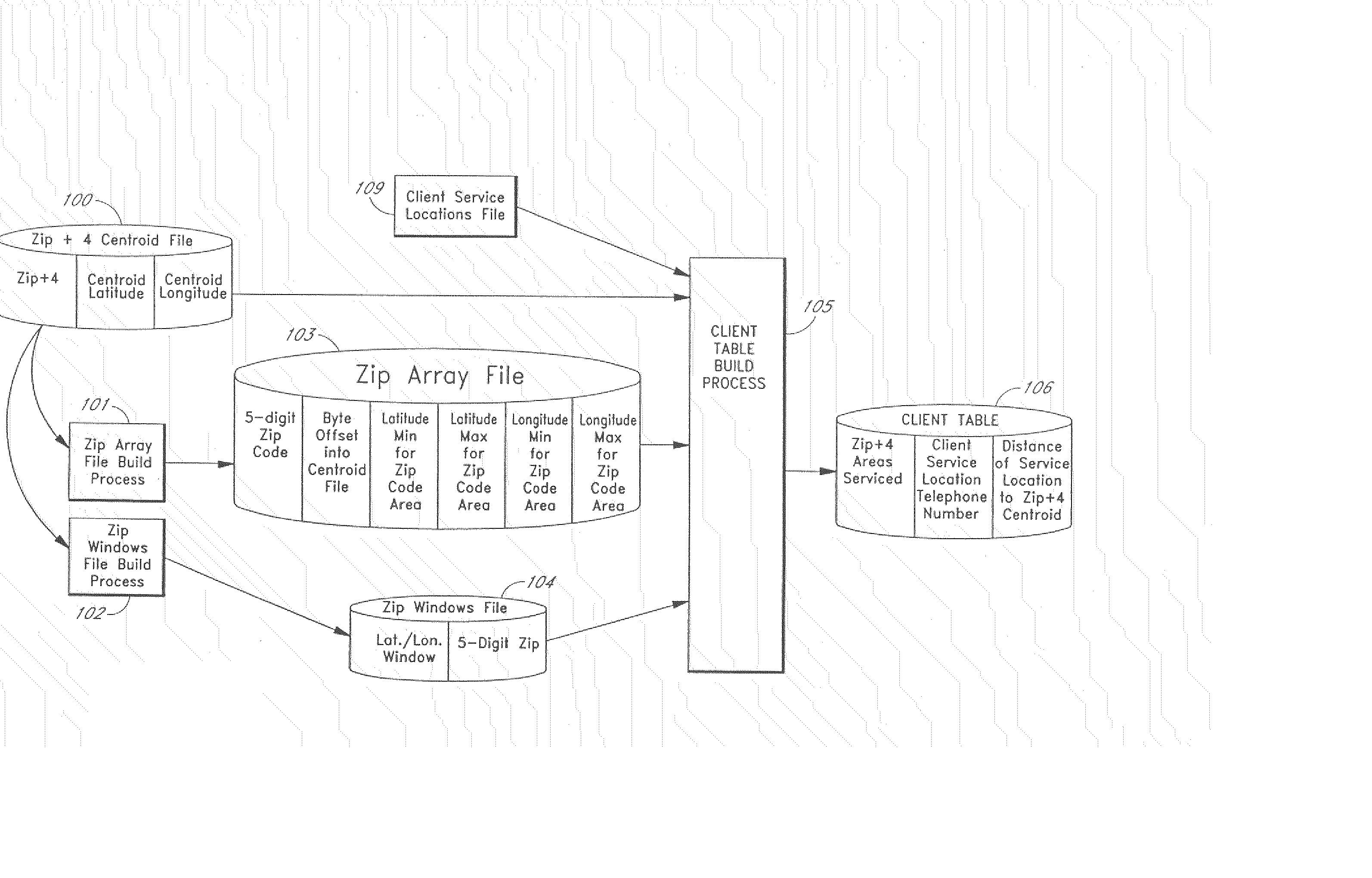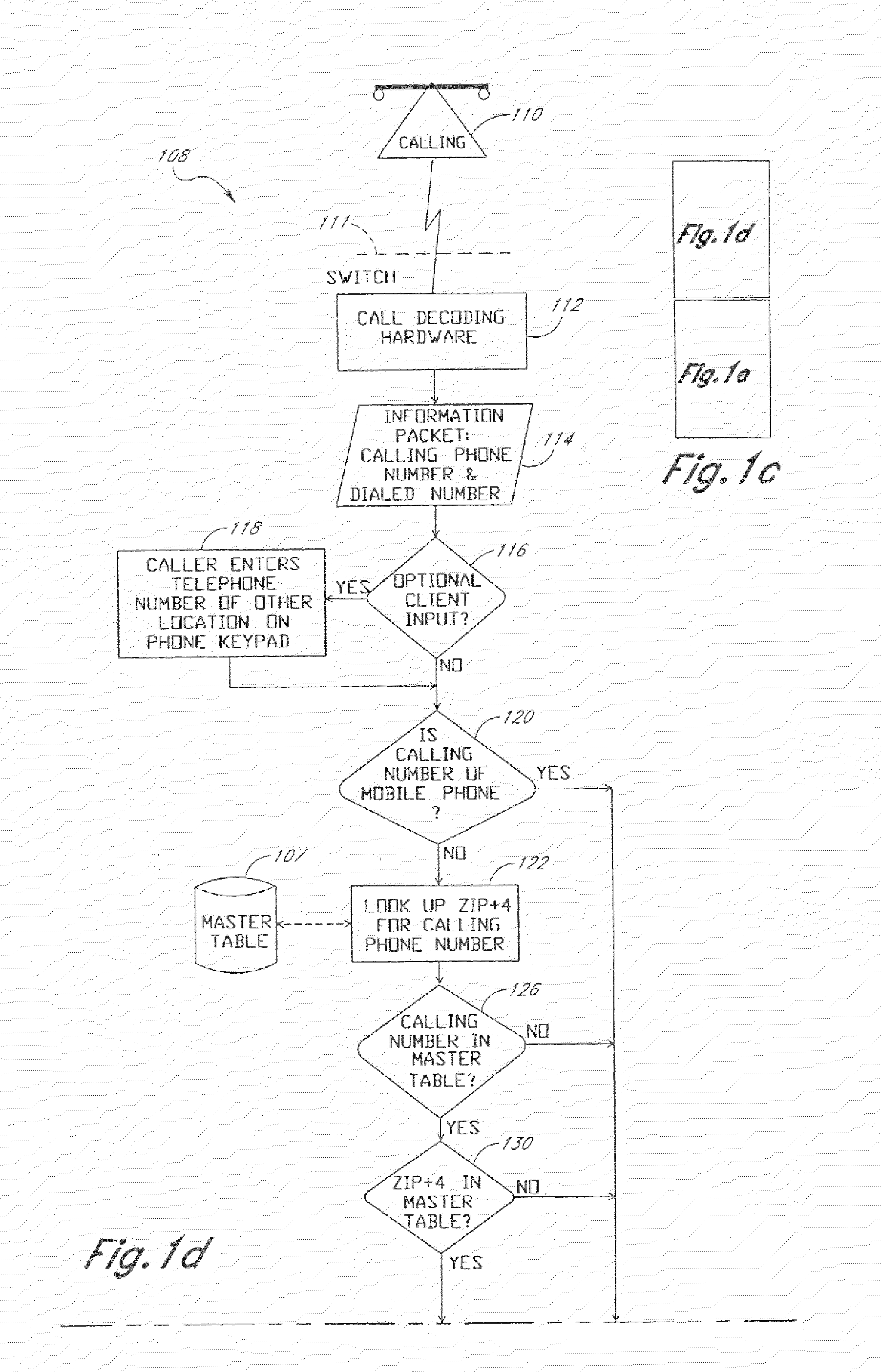Automated telecommunications call processing method
- Summary
- Abstract
- Description
- Claims
- Application Information
AI Technical Summary
Benefits of technology
Problems solved by technology
Method used
Image
Examples
Embodiment Construction
[0059] The following detailed description of the preferred embodiments presents a description of certain specific embodiments to assist in understanding the claims. However, the present invention can be embodied in a multitude of different ways as defined and covered by the claims.
[0060] Reference is now made to the drawings wherein like numerals refer to like parts throughout.
[0061] For convenience, the discussion of the preferred embodiments will be organized into the following seven principal sections:
[0062] I. System Overview;
[0063] II. Routing Example;
[0064] III. General Client Table Build Process;
[0065] IV. Client Table Build Process for a Radius Defined Service Area;
[0066] V. Client Table Build Process for the Service Location Closest to the Caller Within a Distance Limit;
[0067] VI. Client Table Build Process for a Polygon Defined Service Area; and
[0068] VII. Summary.
[0069] I. System Overview
[0070] The present invention includes an automated telephone routing system which rec...
PUM
 Login to View More
Login to View More Abstract
Description
Claims
Application Information
 Login to View More
Login to View More - R&D
- Intellectual Property
- Life Sciences
- Materials
- Tech Scout
- Unparalleled Data Quality
- Higher Quality Content
- 60% Fewer Hallucinations
Browse by: Latest US Patents, China's latest patents, Technical Efficacy Thesaurus, Application Domain, Technology Topic, Popular Technical Reports.
© 2025 PatSnap. All rights reserved.Legal|Privacy policy|Modern Slavery Act Transparency Statement|Sitemap|About US| Contact US: help@patsnap.com



